Going Wild in Forest Park:
The Movement of Wildlife and Disease in an Urban Food Web
| Anthony Dell, NGRREC, Washington University Stephen Blake, Saint Louis University Stan Braude, Washington University, University of Missouri – Saint Louis Sharon Deem, Saint Louis Zoo Amy Witt, Forest Park Forever Jason Knouft, Saint Louis University, NGRREC |

Forest Park – which lies at the heart of Saint Louis and attracts some 13 million people annually – is home to a rich and diverse suite of animals. Using state-of-the-art bio-logging techniques, such as GPS collars, this project aims to explore the movement of diversity of species through space and time in an urban food web. Most movement studies focus on single species or groups of related species, but ecological communities are composed of functionally and phylogenetically diverse species, whose ecology is tied to other community members. Thus, an enormous opportunity exists to use biologging to explore the role of movement in driving patterns of biodiversity. We plan to attach biologgers to 12 species, including birds (Great-horned owl, Barred owl, Green heron, Bald eagle), fish (Brown bullhead, Largemouth bass), mammals (Mink, Ground-hog, White-tailed deer, Eastern gray squirrel, Red Fox) and reptiles (Box turtle, Snapping turtles). We will also quantify baseline health parameters and infectious and non-infectious disease prevalence for the species we track, linking animal movement with disease dynamics in an urban setting. This is a key goal of our project, with emerging infectious diseases at the human/non-human animal interface gaining importance for public health globally, best illustrated by the current COVID 19 pandemic.


The Search for Critically Endangered or
Possibly Extinct Ecuadorean Frogs using eDNA
| Christine Edwards, Missouri Botanical Garden. Mark Wanner and Lauren Augustine, St. Louis Zoo Luis Coloma, Centro Jambatu |
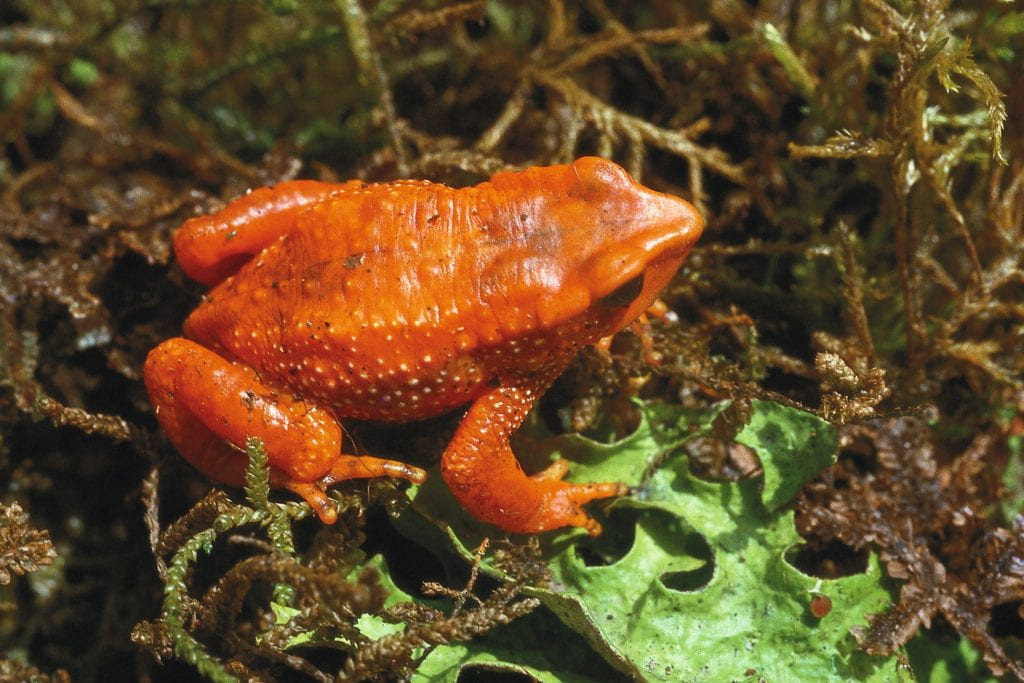
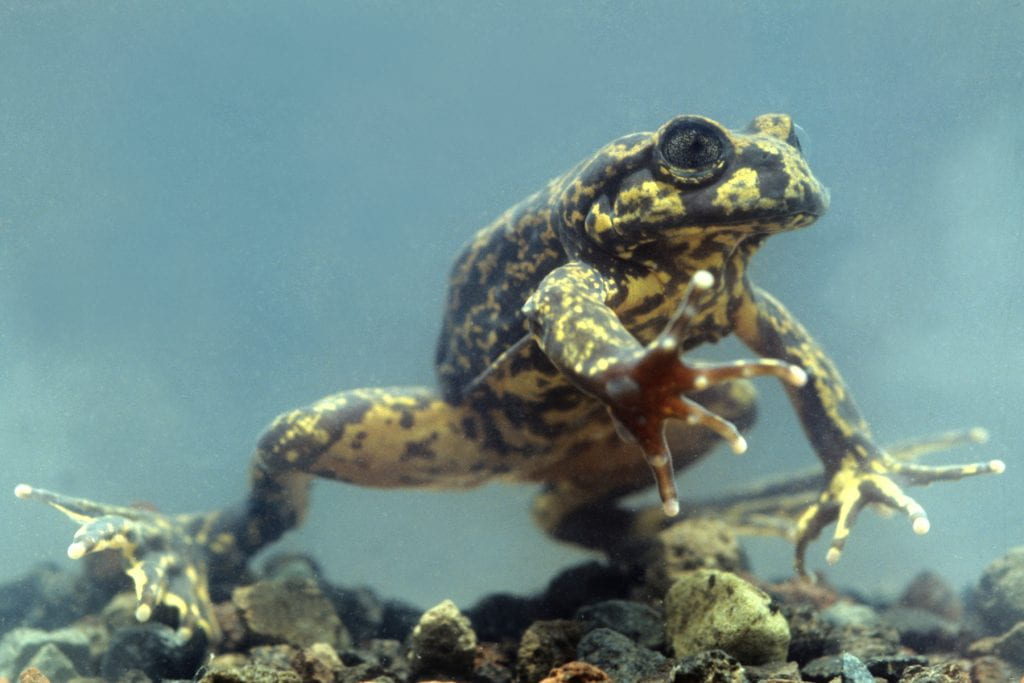
Amphibians began declining abruptly worldwide starting in the late 1980s, attributed mainly to a fungal disease, chytridiomycosis. Some of the most major declines in amphibian species have been observed in Ecuador, where several species in the genera Atelopus and Telmatobius have not been observed for decades and are listed as critically endangered and possibly extinct. However, it is unclear if these species are indeed extinct or whether conventional search techniques have failed to find them. Understanding whether these amphibian species are still extant is critical for determining whether they should be the targets of intensive conservation efforts. In this study, we will use eDNA techniques to search for the DNA of seven possibly extinct amphibian species in water samples collected from their historical ranges in Ecuador. Results will be used to determine whether the species are still present, whether additional searches for species are warranted, where search efforts should focus, and whether efforts should be made to conserve these species.

Testing the Role that Biotic Interactions Play
in Shaping Elevational-Diversity Gradients:
An Ecological Metabolomics Approach
| Jonathan Myers, Washington University (Biology) J. Sebastian Tello, Missouri Botanical Garden Nathan Muchhala, University of Missouri – St. Louis Brian E. Sedio, University of Texas-Austin David Henderson, Washington University (PhD student) Belen Alvestegui, University of Missouri – St. Louis (MS student) |
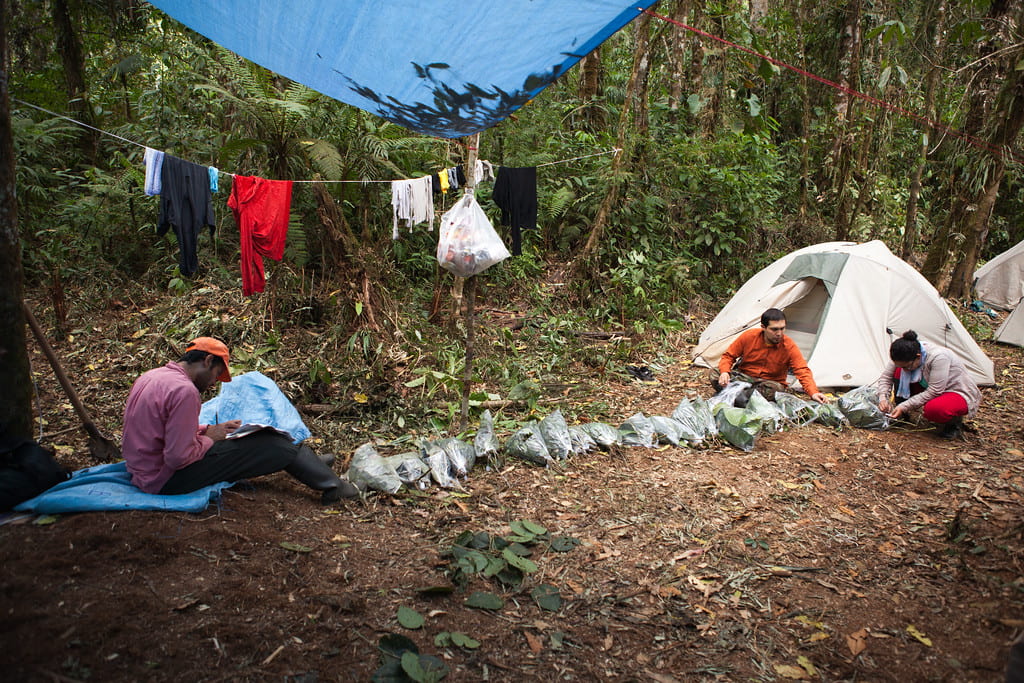
Changes in biological diversity along elevational gradients represent one of the most striking and consistent patterns of life on Earth. Foundational hypotheses in ecology and evolutionary biology posit that stronger biotic interactions among host plants and specialized natural enemies (herbivores and pathogens) contribute to higher species diversity in lowland ecosystems with warmer, wetter, and less-seasonal climates. Yet, after more than 50 years, seminal hypotheses regarding the influence of natural enemies on biodiversity patterns remain largely untested at macroecological scales because of the overwhelming diversity of plant-chemical defenses. This project will overcome this obstacle using recent innovations in mass-spectrometry metabolomics that enable the study of plant-chemical ecology at the scale of species-rich ecological communities. We will leverage long-term data from tropical-tree communities collected by the Madidi Project, a large-scale study of plant biodiversity in the Andes Mountains of South America, the most species-rich biodiversity hotspot on Earth. Using existing leaf samples from over 500 tree species that occur in 16 forest plots spanning a 2,600-meter elevational gradient in Bolivia, we will analyze leaf-chemical defenses (secondary metabolites) of each tree species in each forest plot to test the hypothesis that stronger selection by natural enemies for plant defenses at lower elevations shape gradients in plant diversity and evolution. This project will provide one of the first macroecological studies of plant-chemical ecology and the role it plays in the origins and maintenance of species diversity in a global biodiversity hotspot.

Collaborating with Community Scientists to Improve Conservation: A Case Study with Bee Visitation Networks
| Nicole Miller-Struttmann, Webster University Eric Goedereis, Webster University Erin Tate, Saint Louis Zoo Gerardo Camilo, Saint Louis University Ed Spevak, Saint Louis Zoo Mike Dawson, Saint Louis Zoo Bob Coulter, Missouri Botanical Garden |
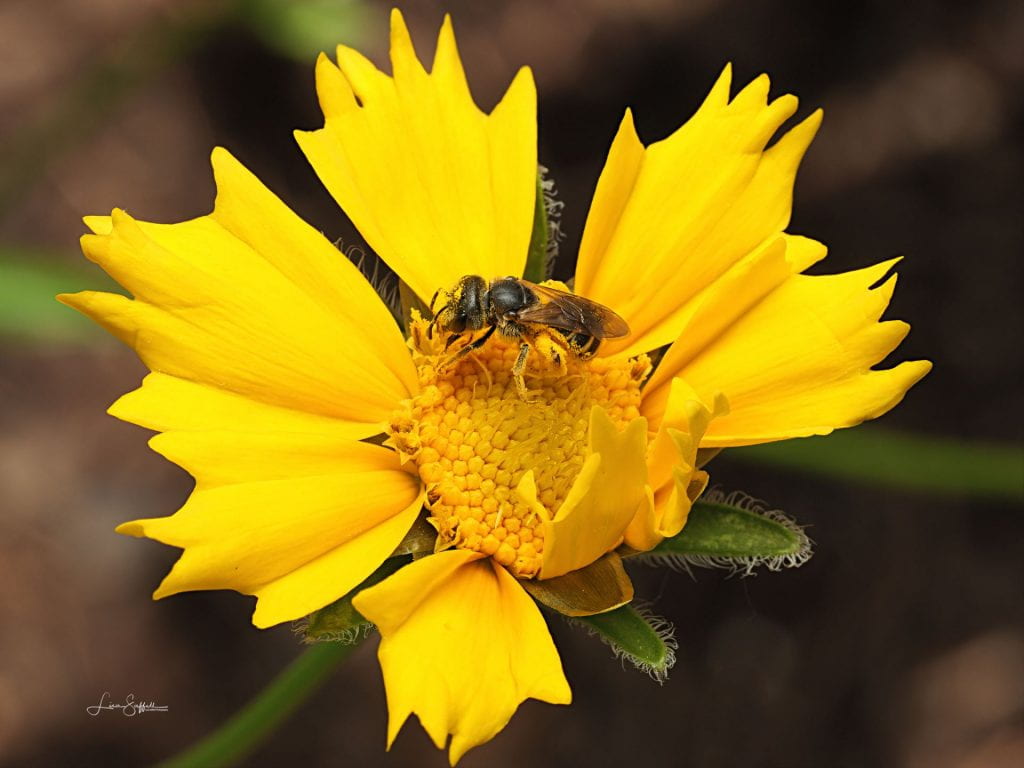
Urban landscapes are a patchwork of small parcels of land that vary considerably in conservation quality and have a tendency to favor some species over others. However, the success of urban conservation efforts relies heavily on two things: knowledge of the biological system and individual decisions by landowners. The likelihood that a person takes conservation action is driven, not by scientific knowledge per se, but by their intentions and feelings of control. Collaborations between landowners and scientists, such as community science programs, have the potential to simultaneously test questions of conservation interest while empowering landowners to become conservation stewards. In this project, we will collaborate with community scientists to document bee diversity and foraging behavior in residential gardens through the Shutterbee community science program. We will test whether conservation practices increase the diversity of urban bees and whether participation in a community science program changes conservation-related attitudes and behaviors of the participants. Ultimately, this project will inform best practices in urban bee conservation and deepen our understanding of what influences conservation-related behavioral change.

Protecting Biodiversity and Human Health through Wild Edible Plants of Alandraza-Agnalavelo Sacred Forest, Madagascar
| Tabita Randrianarivony, Missouri Botanical Garden Lori Iannoti, Washington University Armand Randrianasolo, Missouri Botanical Garden |
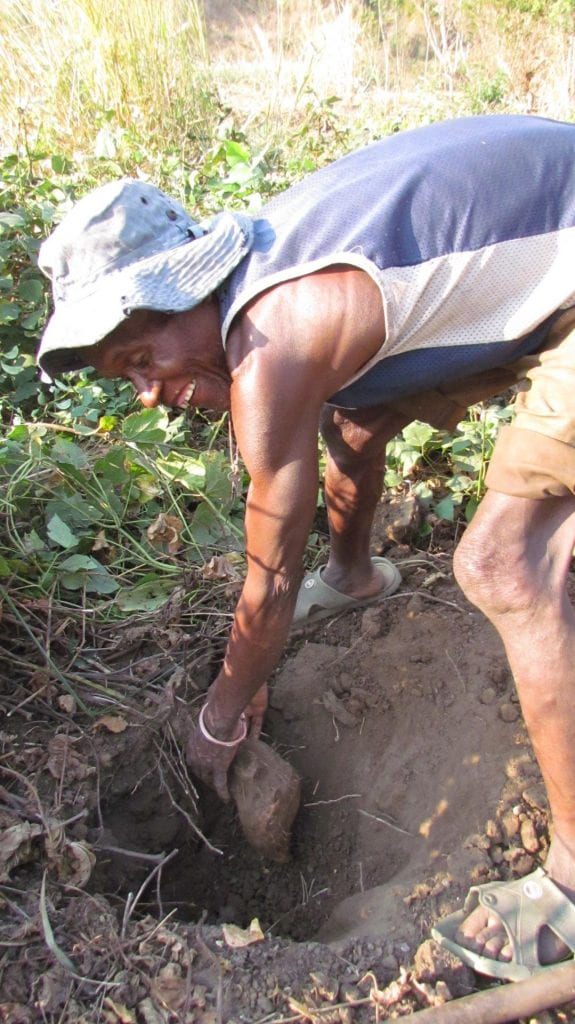
Wild edible plant species are very important to people living in the dry southwestern region of Madagascar. The community living around the sacred forest Alandraza-Agnalavelo located in the same region are no exception. According to our preliminary survey (Randrianarivony et al. 2015), about 40 wild plant species were cited by community living around Alandraza-Agnalavelo for consumption to alleviate hunger during drought periods. For this project, we will study nutritional value and the conservation status of the five wild plant species most used by the community surrounding Alandraza-Agnalavelo during starvation periods in order to support human health and inform biodiversity conservation. This is a collaborative research project between Missouri Botanical Garden and the Brown School of Social Work of Washington University. MBG provides expertise in research and biodiversity conservation in Madagascar and Brown School brings globally tested best practices in identifying environmentally sustainable nutrition solutions. Surveys will be undertaken to gather data on socio-economic and demographic factors driving wild food choices during hunger period and to understand attitudes, practices, and behaviors of local people facing starvation. Through this research, we will make available a management plan and information about nutrient contents for the most important wild edible plant species from this sacred forest.

Using iDNA to Increase the Protected Status of the Djeke Triangle and Enhance Disease Surveillance in the Congo Basis
| Crickette Sanz, Washington University (Anthropology) Sharon Deem, Saint Louis Zoo Peter Fischer, Washington University (Infectious Diseases) Maris Brenn-White, Saint Louis Zoo Heidi Hellmuth, Saint Louis Zoo Fabian Leendertz, Robert Koch Institute Livia Patrano, Robert Koch Institute Wen Mayoukou, Wildlife Conservation Society David Morgan, Lincoln Park Zoo |
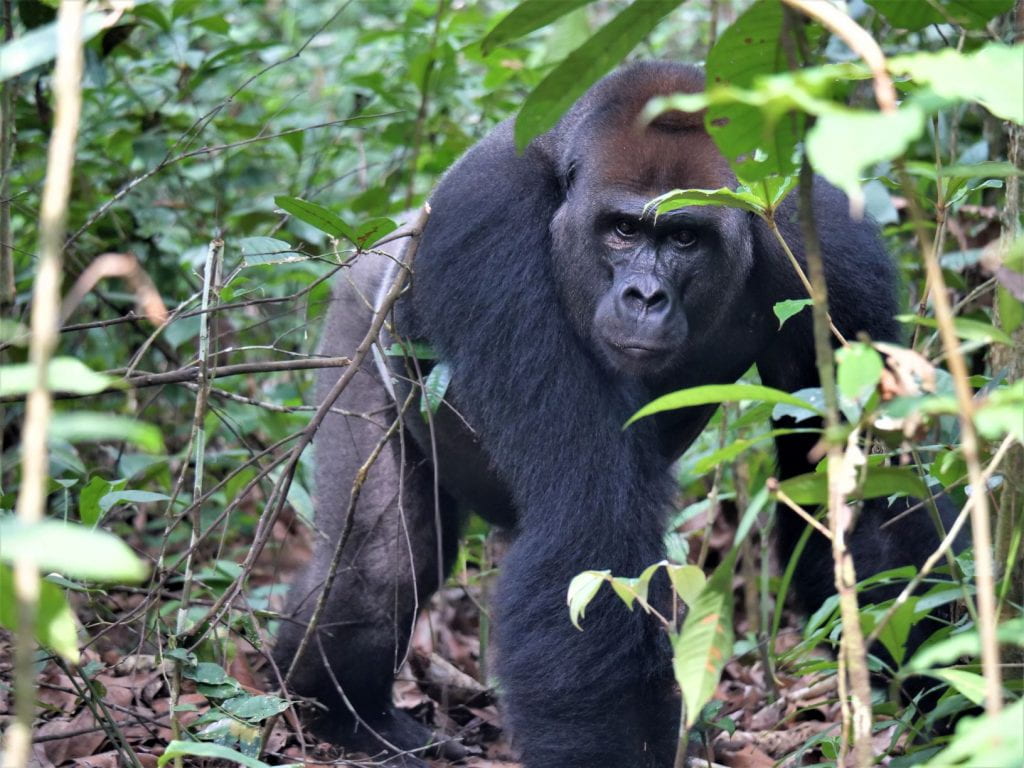
The Congo Basin has long been considered an epicenter of emerging infectious diseases. Unprecedented levels of habitat conversion and increased contact between wildlife and human populations have become more common and widespread throughout this region, which harbors the majority of remaining critically endangered western lowland gorillas and endangered central chimpanzees. Disease surveillance and biodversity assessments of elusive wildlife in remote areas are costly, time intensive, and difficult to validate. High-throughput sequencing (metabarcoding) of environmental DNA from invertebrates feeding on the wildlife or their remains has emerged as a possible alternative to invasive or noninvasive sampling of wild-living vertebrates. iDNA also provides a novel, noninvasive approach to survey viral and bacterial pathogens in wildlife which can aid in determining the factors underlying the emergence of infectious diseases impacting both wildlife and humans. Wildlife health surveillance can inform public health systems on pathogen distribution and provide opportunities to investigate the ecology of zoonotic pathogens. As part of a comprehensive conservation medicine approach, our research team will also work to identify enhanced surveillance tools to associate pathogens in the environment to symptoms in great apes.
